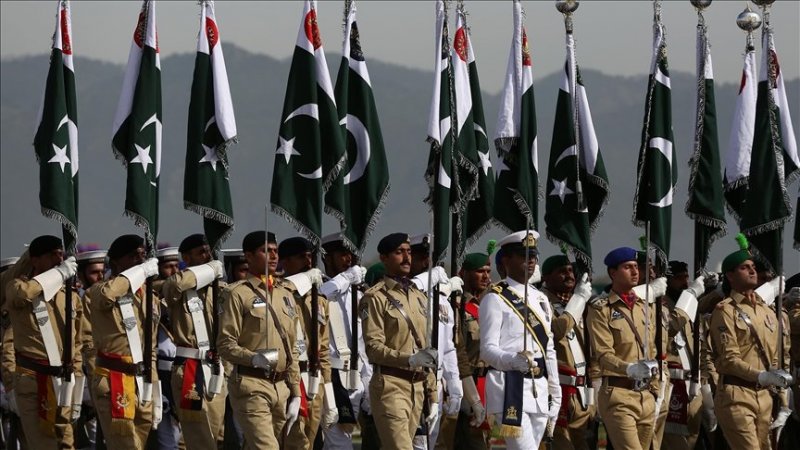Moses Becker is a political commentator for News.Az. He holds a PhD in political science and specializes in interethnic and interreligious relations. The views expressed in this article are the author’s own and do not necessarily reflect the position of News.Az.
On August 31, 2021, the United States concluded its “Operation Freedom’s Sentinel” and withdrew from Afghanistan. Once again, the Afghans had defeated foreign powers in defense of their traditional way of life. No ideology imposed from outside had managed to appeal to the people of this mountainous country. It seemed that independence had been secured, enemies defeated, and the time had come to build a peaceful life.
However, Afghanistan’s geography has always posed a challenge. Landlocked and surrounded by mountains, the country has limited access to trade routes and development opportunities. The dominant ethnic group in Afghanistan is the Pashtuns – about 13.5 million people, or roughly 42 percent of the population. In Pakistan, there are around 37 million Pashtuns. This creates the problem of a divided nation. The Durand Line, drawn by Britain to demarcate the border between Afghanistan and Pakistan, is not recognized by Afghan authorities, who claim it splits the Pashtun people in two.
As with most conflicts, the roots are economic. Pakistan’s GDP amounts to approximately $338.4 billion, while Afghanistan’s is only $14.5 billion, despite its significant but largely unexplored reserves of natural resources.
Many experts believe Kabul possesses large deposits of rare earth elements, gold, lithium, iron, and oil. Yet Afghanistan remains one of the poorest countries in the world.
A comparison of the two nations’ military strength highlights a vast disparity. According to the Global Firepower (GFP) ranking, which evaluates more than 60 factors affecting a country’s defense capabilities, Afghanistan ranks 118th with a power index of 2.6442, while Pakistan ranks 12th with a score of 0.2513. The Afghan Air Force operates only nine aircraft, compared to Pakistan’s 1,399.
 Photo: Anadolu Agency
Photo: Anadolu Agency
After the U.S. withdrawal, a significant amount of military equipment was left behind in Afghanistan. Yet the Afghan army, composed of eight infantry corps, remains largely equipped with outdated small arms and limited artillery, such as 82-mm mortars and Soviet-era 122-mm D-30 howitzers, along with a few BM-21 Grad systems. From the Western coalition, only a few hundred anti-tank guided missiles remain—insufficient to close the gap with Pakistan’s arsenal.
The current Afghan army numbers about 170,000 troops, compared to Pakistan’s 650,000. Experts note that Afghanistan’s real strength lies in ideology and terrain, and as guerrilla fighters, the Afghans are nearly invincible in their own mountains.
The core reason for today’s conflict lies in Pakistan’s accusations that Kabul supports Tehrik-e-Taliban Pakistan (TTP), a Pashtun militant group designated as terrorist by Islamabad. Relations between the two countries have sharply deteriorated in recent weeks. On October 12, 2025, Afghan forces attacked Pakistani border posts, calling it “retaliation” for airstrikes on Afghan territory. For months, Islamabad has accused the Afghan Taliban government of harboring TTP militants. Kabul denies this, but many analysts believe that the TTP does, in fact, receive military and financial backing from Afghan authorities, and its fighters train on Afghan soil.
Tehrik-e-Taliban Pakistan was formed in 2007, consisting mainly of Pashtuns. Its stated goal is to destabilize Pakistan, detach Pashtun-majority provinces, and eventually unite them with Afghanistan.
A decade ago, the group even established camps in Syria and sent militants to fight against Bashar al-Assad’s regime. In 2010–2011, the U.S., the U.K., and Canada designated the TTP as a terrorist organization. Subsequent Pakistani military operations and U.S. drone strikes eliminated many of its leaders.
In 2018, Islamabad declared victory over the TTP and merged the Federally Administered Tribal Areas (FATA) with Khyber Pakhtunkhwa Province to create a single administrative region. Yet this did not solve the underlying problem, as it failed to improve the economic, religious, and social conditions of the local tribes.
 Photo: AP
Photo: AP
When the Afghan Taliban returned to power in 2021, the TTP was revived. With Kabul’s support, the group gained access to modern American weapons left behind by U.S. forces. It is now seeking to expand its influence into Punjab, Pakistan’s most populous and prosperous province. Islamabad’s already fragile control over the western mountainous regions bordering Afghanistan is further weakened by the presence of ISIS militants who have resurfaced there.
Although the TTP is not formally unified with the Afghan Taliban, the two movements have historically cooperated closely in their fight against “NATO’s satanic forces” and Pakistan’s “pro-Western” government. Both share a common Pashtun base.
After the Taliban’s victory in Afghanistan, the Pakistani Taliban pledged allegiance to Kabul’s new rulers, though the Afghan Taliban continue to deny hosting TTP militants on their territory.
In recent years, Pakistan has once again named the local Taliban one of its top security threats and launched a renewed military campaign against them. These operations have claimed the lives of hundreds of soldiers.
Moreover, Pakistan’s harsh and indiscriminate tactics have caused civilian casualties, fueling public resentment toward the central government. Tens of thousands of residents have fled their homes, many crossing into Afghanistan to seek refuge among their Pashtun kin and under the protection of the Afghan Taliban.
According to Pakistani military sources and UN experts, TTP operations supported from Kabul have become increasingly sophisticated in 2024–2025. The group has intensified attacks on Pakistani police and military forces while continuing to terrorize civilians. As a result, another dangerous hotspot has emerged near the borders of the Central Asian states.
For Pakistan, the fight against local Taliban militants, backed by their Afghan counterparts, is likely to remain a long and grueling struggle.
(If you possess specialized knowledge and wish to contribute, please reach out to us at opinions@news.az).
